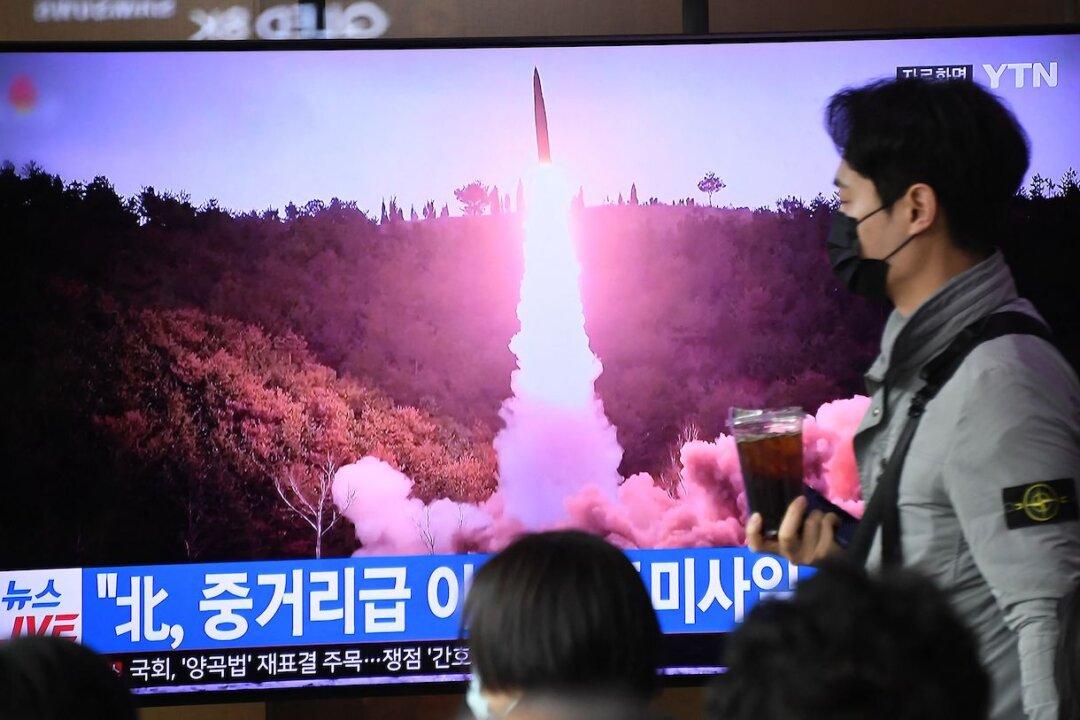North Korea fired a ballistic missile on April 13, according to South Korea’s military, triggering a scare in northern Japan.
The launch prompted Japan’s government-run emergency broadcasting system, J-Alert, to warn millions of residents on its northernmost island of Hokkaido to “evacuate immediately” and take immediate cover in a building or underground, stating that the missile was expected to land near the island.




